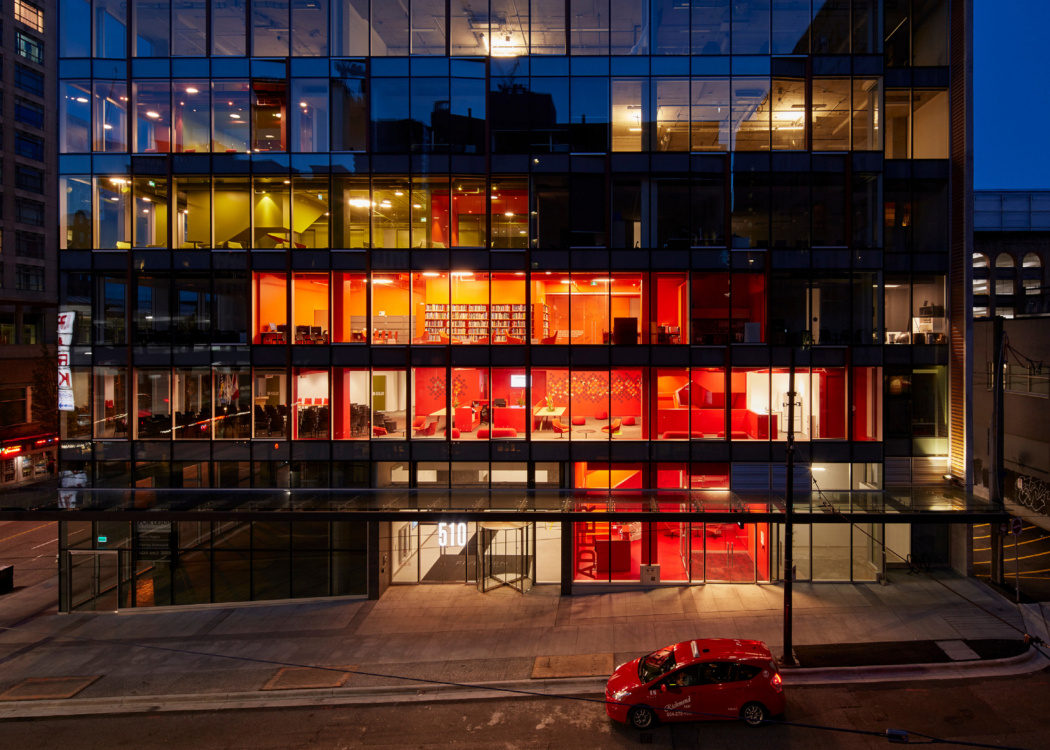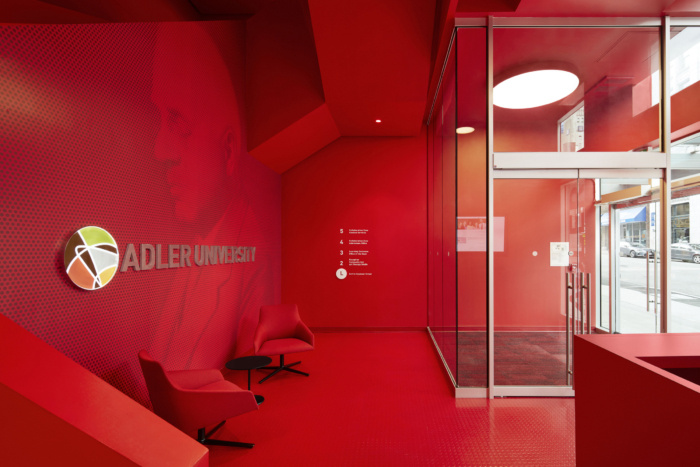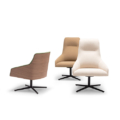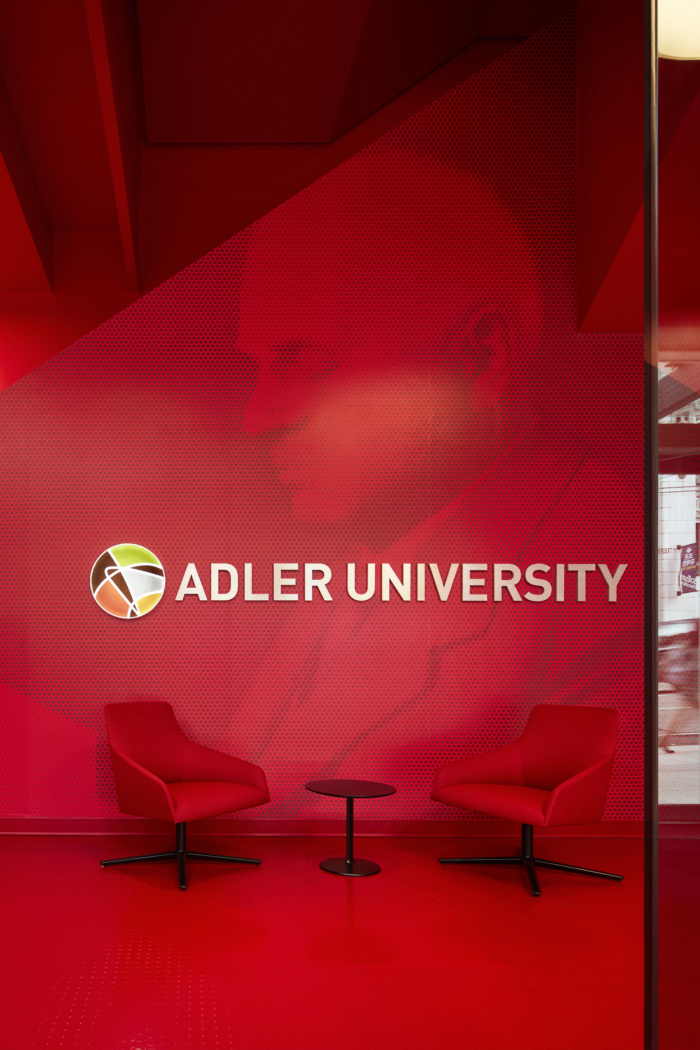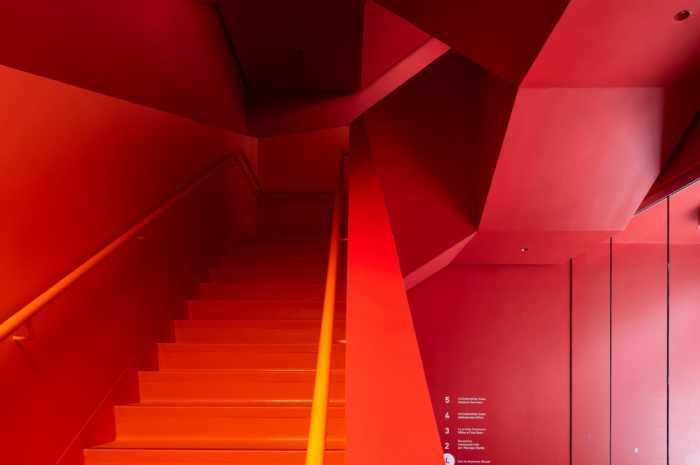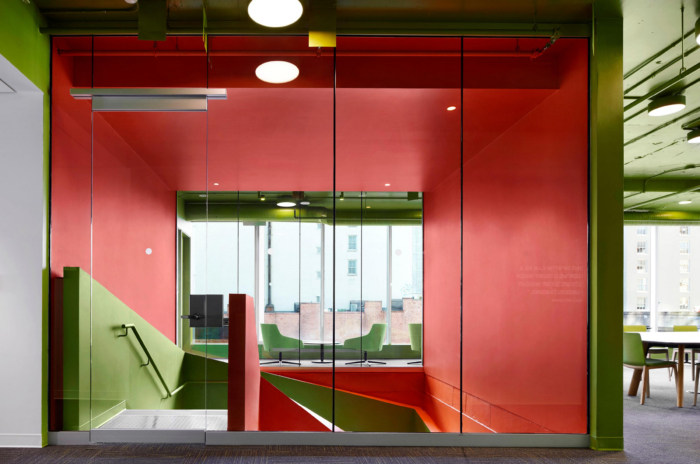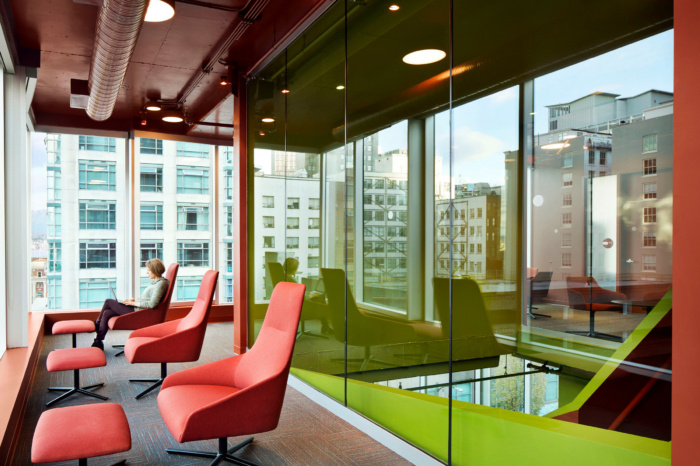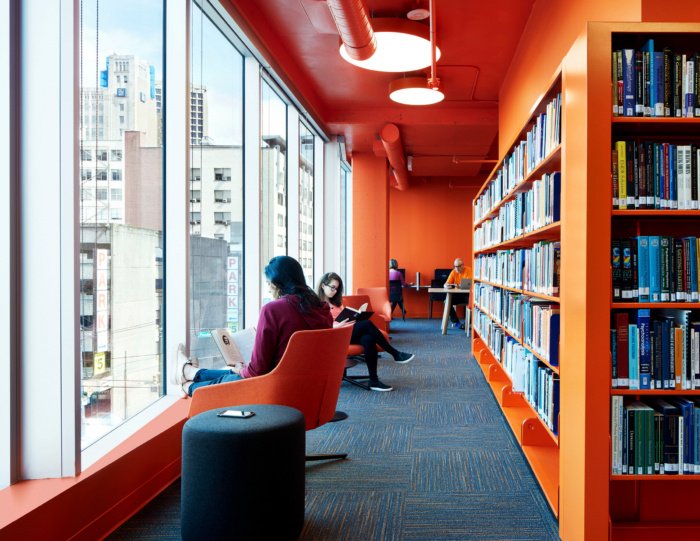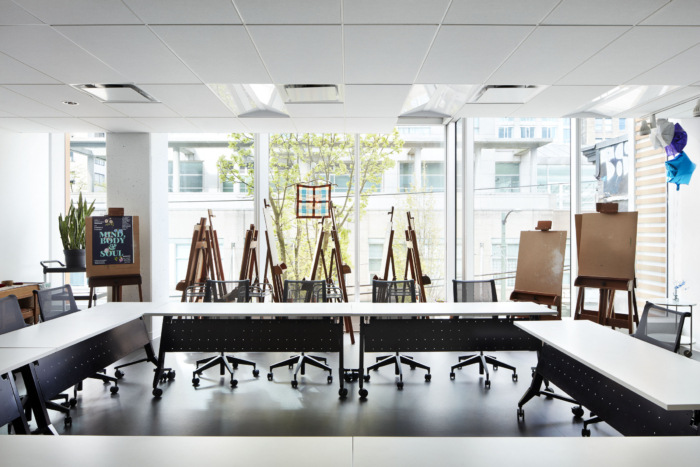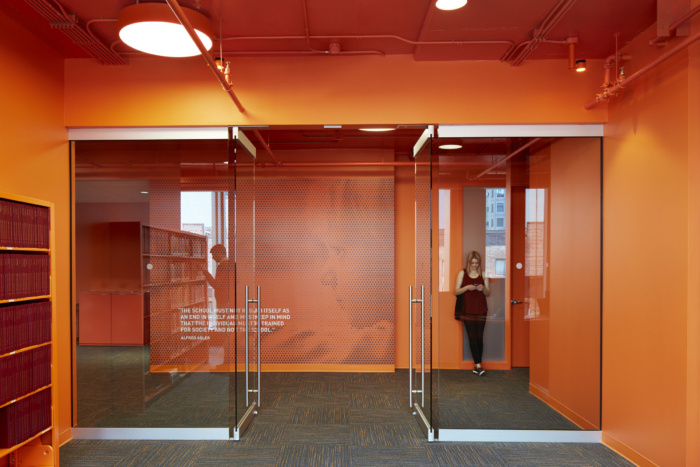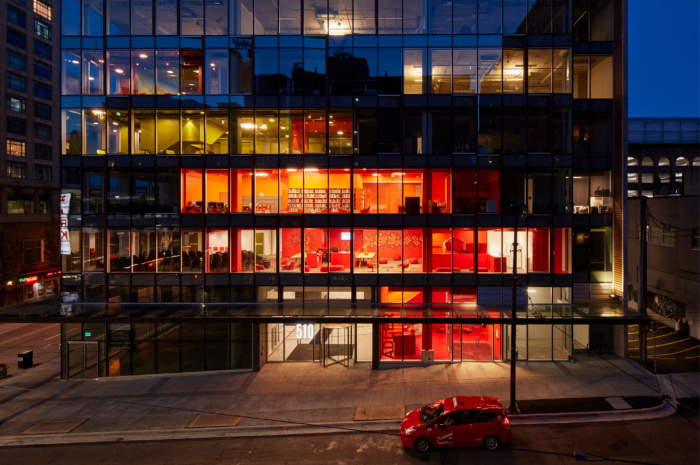Adler University Vancouver Campus
PUBLIC has designed the Adler University Vancouver Campus which invites students to solve real-world social problems located in Vancouver, Canada.
Universities are becoming increasing expansive, held across multiple platforms, locations, and cities. These extensions have increased the importance of a school’s storytelling, identity, and branding. For example, most would be surprised to know that downtown Vancouver’s academic precinct rivals the scale of its better-known suburban campuses. Home to satellite campuses of several universities and language schools in generic buildings, it is the cheap eats and bars that signal the activity upstairs. Despite appearances the neighbourhood offers a vitality not equalled by the city’s suburban campuses.
In this context, Adler University has opened a new campus dedicated to graduating practitioners who will lead social change and create a more just society, through degree programs, training, and community engagement focused on socially responsible practice. The university offers an immersive curriculum that invites students to solve real-world social problems.
To support its mission the university is extroverted and iconic. In contrast to its neighbours, it connects visually and physically to the surrounding neighbourhood. Located on the first five floors of a slender glass point tower, this tenant improvement is flooded with the university’s brand colours to stand out in the crowd and welcome visitors up through its five-floor campus.
Inside, a vertical academic promenade propels visitors up through the campus. A continuous spiralling stair twists through the campus commons and reveals views of campus/city/campus as one moves through the spaces. Adler’s mission and values are reinforced in all common areas with illustrative timelines and inspirational quotes from social justice leaders.
The stairs and campus commons are the key organizing device for the design. Inspired by academic courtyards like Harvard Yard, the commons are shared space from which classrooms, offices, and support spaces radiate outward. They are where informal learning and social interaction, critical for a school dedicated to lifelong learning, take place.
Colour is another key design element. Derived from Adler’s design standards, the colour palette provides reference within the vertical campus in the same way that a clock tower on a traditional campus might. Seen through the curtain wall from the exterior, colour creates a civic scale to a project that would otherwise be just an interior.
The design has transformed the way Adler carries out its business. Formerly located on separate floors in an office building in the city’s financial district, the school struggled to maintain a cohesive sense of mission. Faculty offices were on floor seven, while administration, classrooms, and social spaces were on floor twelve. As a visitor, it was not possible to reach a faculty office without an escort. Today all floors are linked by sculptural stairs so that walking the entire campus is encouraged. On level two a campus commons is the pre-event space for the university’s largest seminar room. A glazed sliding partition can be opened to connect the two spaces and allow the entire school to gather in a single space for ‘town hall’ meetings. An adjacent bar creates a welcoming atmosphere for evening symposia and events.
When the design team was asked to create a sense of academic community in an office building designed for separate tenants, the base building was already under construction. To meet this challenge, the programme and design phases were carried out concurrently so that space could be “reserved” in the first five floors of the concrete structure for a vertical circulation system.
As programming concluded, the potential emerged for a continuous campus commons connected vertically and horizontally through all five floors with spiral staircases. The spiral stairs were selected because they allowed the post tensioned bands to flow around them while creating landmarks and dynamic views through the floors. On a pragmatic level, the spiral stairs also bought time for the integrated design and construction team because the steel stairs were installed after the concrete work was complete and could be rotated as required in plan to suit the final partition layouts. This project is on track for LEED Gold Certification.
Architect: PUBLIC
Design Team: Susan Mavor, Teresa Miller, Warren Scheske, Craig Simms, Brian Wakelin
Photography: Martin Tessler

